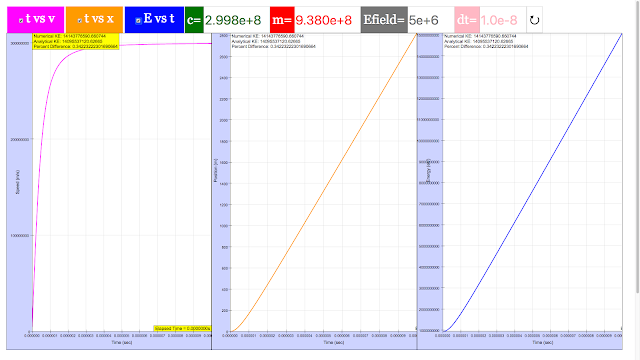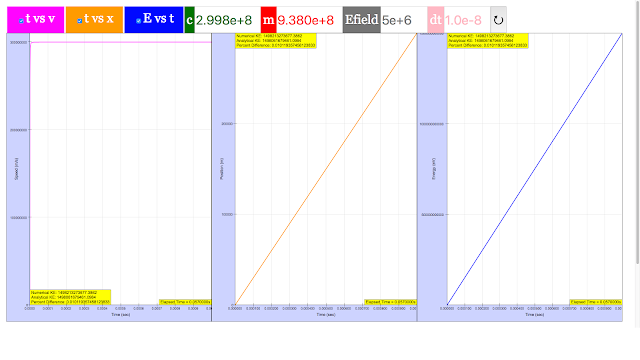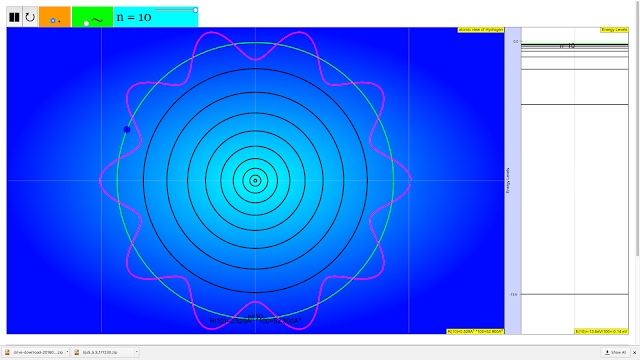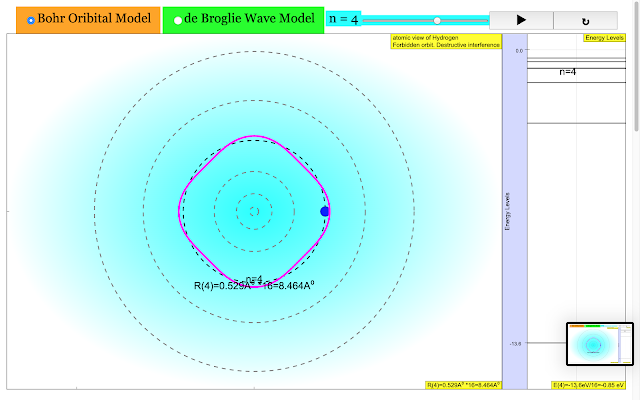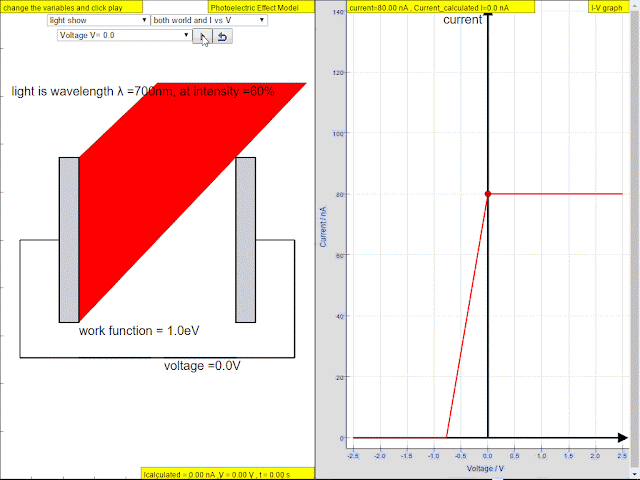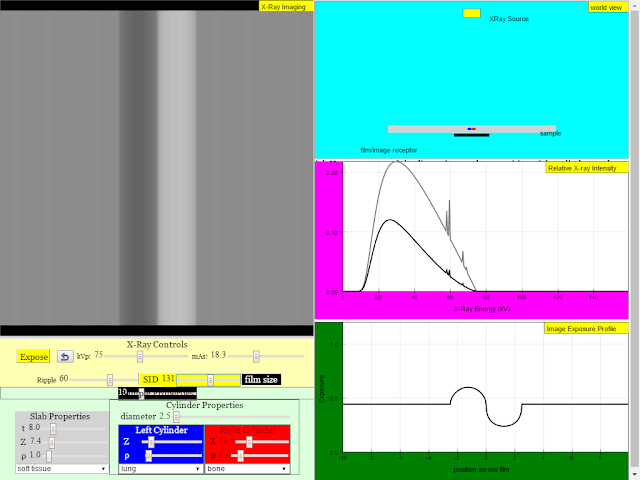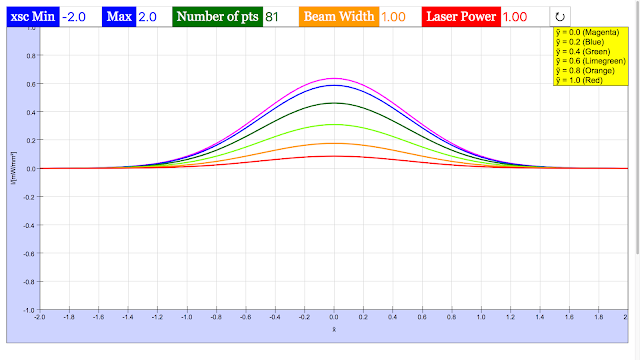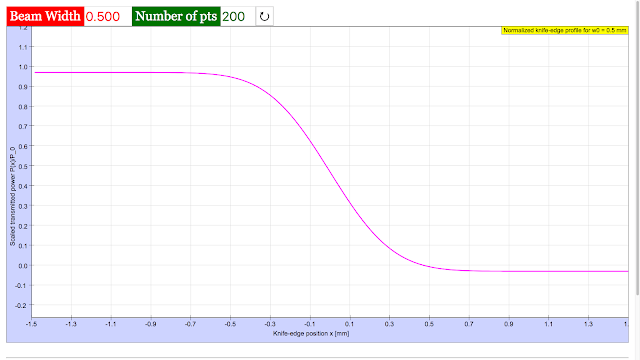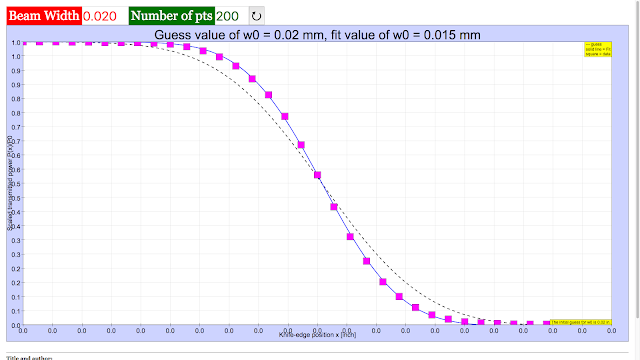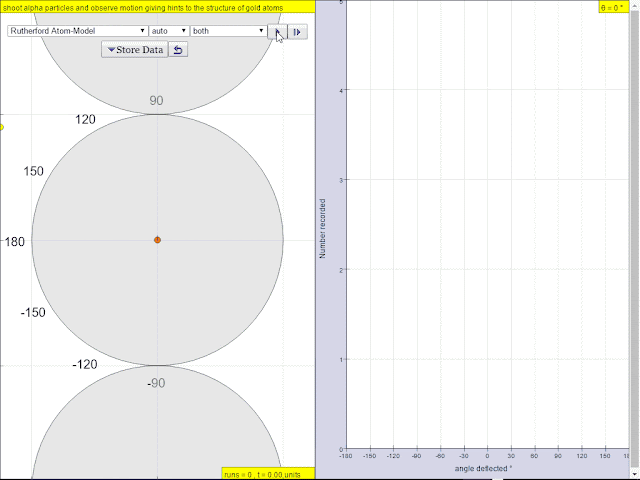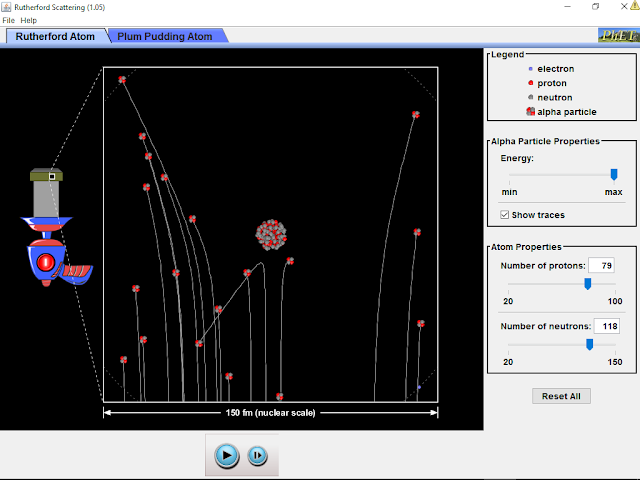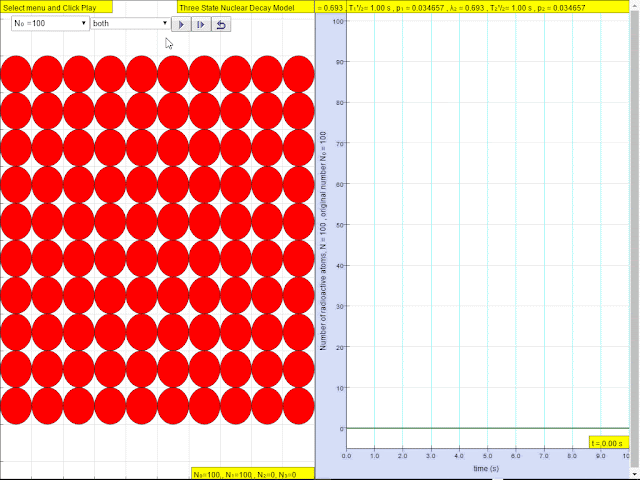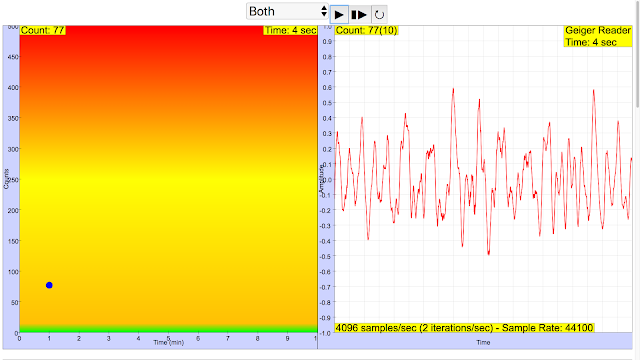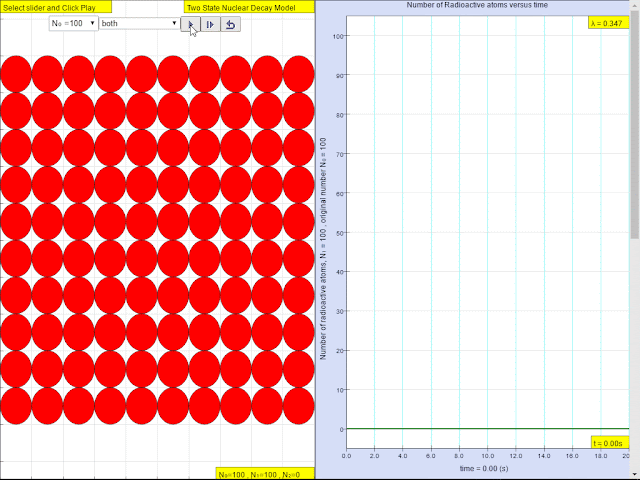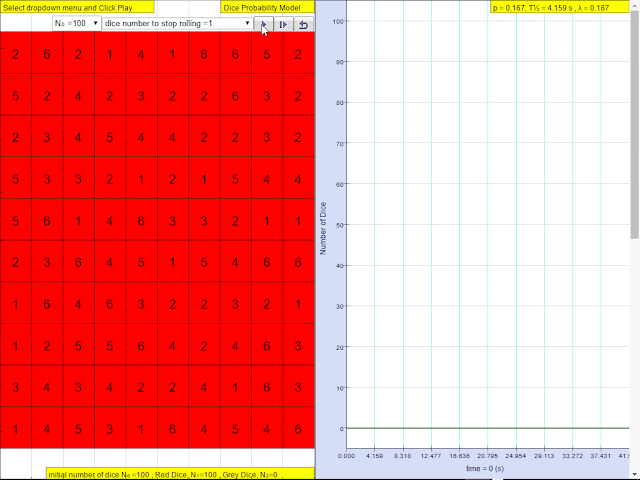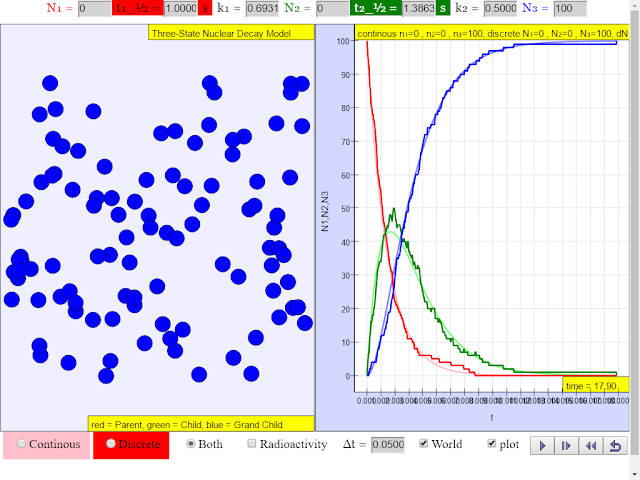Breadcrumbs
06 Quantum Physics
1. Symmetry 2.Integrability 3. Duality 4. Enormous advances in physics and some of these advances have brought into question, or have directly contradicted, certain theories that call for new knowledge to be created
Other resources adapted from http://mptl.eu/ Report and Recommendations on Multimedia Materials for Teaching and Learning Quantum Physics B. Mason1 , E. Dębowska 2, T. Arpornthip3 , R. Girwidz4 , T. Greczyło 2, A. Kohnle5 , T. Melder6 , M. Michelini7 , L. Santi7 , J. Silva8 1 University of Oklahoma (US), 2 University of Wroclaw (PL), 3 University of Virginia (US), 4 Ludwig Maximilian University Munich (DE), 5 University of St. Andrews (UK), 6 University of Louisiana, Monroe (US), 7 University of Udine (IT), 8 Henrique Medina Secondary School (PT)
- QUVIS: https://www.st-andrews.ac.uk/physics/quvis/ This is an extensive collection of Flash and HTML5-based tutorials with interactive simulations of quantum systems and step-by-step explanations of the concepts involved. The presentations have very attractive graphics and clear explanations, with the step-by-step tutorials particularly noteworthy for helping students focus on the important physics. The Physics Simulations take students through the traditional sequence used in most quantum courses, from the concepts of probability to perturbations and Fermi and Bose statistics. The New Quantum Simulations are used as the multimedia resources in the IOP Quantum Physics web site. This work focuses on quantum optics and quantum information theory, with many simulations using Stern-Gerlach experiments as an example. Almost all of the items include student activities and didactic recommendations, with the IOP site providing extensive tutorial and reference resources supplemented by the simulations. The translation of this material to HTML5 for use on all platforms is of particular note. An excellent example of the QUVIS materials is the Hidden Variables simulation. This is one of the culmination of the entire collection. It shows the virtual experiment and the different results of quantum and hidden-variable theories.
- PhET: http://phet.colorado.edu/en/simulations/category/physics/quantum-phenomena This is a collection of easy-to-run simulations suitable for middle-school (a few), high school, and college. These simulations are highly interactive and open environments with drag-and-slide user interfaces and game-like immediate feedback. The simulations can be used in a range of different ways, homework, pre-labs, and in-class explorations. Most of the simulations have recommendations for instructors, including learning goals and example activities. General recommendations for using simulations are also available. The reviewers also emphasized the fact that the PhET materials are available in a wide range of languages. Figure 1. QUVIS: Quantum Mechanics vs Hidden Variables The PhET simulations are carefully researched and designed for interactivity and student learning. Many of these simulations are connected to “modern physics” experiments, such as lasers, the photoelectric effect, Stern-Gerlach, and Davisson-Germer experiments rather than “pure quantum theory”. The Teacher Tips provide some information about the models and approximations used in the simulations, as well as student understanding of the topic and details about the operation of the simulation. An excellent example of a simulation of standard quantum problems is the Quantum Bound State. A noteworthy example of a virtual experiment is the Photoelectric Effect.
- Physlet Quantum Physics: http://www.compadre.org/pqp/ This online textbook supplement of interactive illustrations and problems covers topics ranging from experiments demonstrating quantum phenomena, through standard bound and scattering state physics, to applications in atomic, nuclear, and statistical physics. Users can control states, energy levels, potentials, etc. and observe the resultant changes. Students may explore quantum systems for themselves with the help of guiding questions that range from qualitative ranking tasks to quantitative calculations. One reviewer felt that the Physlet Quantum Physics simulations’ graphics are somewhat dated and simple. They also noted that words such as “psi*(x) * psi(x)” are used in simulations rather than Greek letters. Those interested in exploring Physlet Quantum Physics might consider Problem 9.4, Scattering in 1D. This is an example of the type of questions that encourage explorations. The physics behind an animation of a scattering state needs to be understood to answer questions about energy and potentials. Similarly, Problem 13.7 is an interesting exploration of the level dependence of the probability density for a Hydrogen atom.
- Quantum Lab: http://www.didaktik.physik.uni-erlangen.de/quantumlab/english/index.html This is a set of Interactive Screen Experiments covering quantum optics. Each of the experiments is illustrated with images of real experiments. Real data is provided when the experiments are “turned on”. Quantum entanglement, quantum cryptography, and other quantum information experiments are included along with more basic examples. This content can be used as pre-labs for schools with the facilities to perform quantum optical experiments, or as entirely virtual labs. Each experiment is well described, with motivating introductions and explanations of the observations. Reviewers noted that some design and layout of the controls is problematic, with control placement and design changing in different experiments. The ability to zoom in on parts of the experiment is a plus. Some of the data is in German. To start exploring this material, the Existence Photon experiment can give an indication of its interface and display of real optics experiments. A more sophisticated experiment, such as Entanglement, will show how data is displayed.
- Spins Physics: http://www.physics.orst.edu/~mcintyre/ph425/spins/index_SPINS_OSP.html, http://www.compadre.org/osp/items/detail.cfm?ID=7329 The Oregon State University SPINS web site provides a complete set of course materials (worksheets, virtual labs, in-class activities, and homework) for a quantum mechanics course that begins by studying spin systems. The Open Source Physics (OSP) package integrates these tutorials with simulations for student investigations. The software allows students to drag, drop, and connect elements of a Stern-Gerlach experiment including spin analyzers, magnets, and detectors. The interface allows students to create many different experiments on quantum dynamics and quantum measurement. The simulation is simple to use but is rather schematic so students may not understand precisely what is being observed. The software can be used for different sorts of learning activities. This work is based on the “SPINS” software package that has been developed over the years by several different programmers [Schroeder 1993]. A good example of the Spins tutorial material can be found under “Exercises” and the tab for “Spin Precession” at the bottom of the page. This series simulations are arranged to help students understand the quantum rotation of spins in magnetic fields.
- Falstad Quantum: http://www.falstad.com/mathphysics.html This well-known web site provides good qualitative illustrations of quantum mechanics and complex systems. Some of the physics topics simulated are unique. Of note are the dynamic quantum transitions applets for a bound state interacting with a classical oscillating electric field. This material, however, is somewhat limited in the topics covered and lacks didactic materials or recommendations. Rather basic explanations about the simulations are provided, most covering only how to run the simulation. Details about the physical models and simulation methods use are not available for many of these programs. One excellent example of the Falstad work is the Atomic Dipole Transitions applet. It considers the dynamics of an atom interacting with different types of the electric field. The Rigid Rotator and the Square Well applets illustrate the displays provided.
- Quantum Mechanics: http://www.embd.be/quantummechanics/default.html This combination of text and videos provides a multimedia tutorial on quantum mechanics. Topics include wave motion and interference, Aharonov-Bohm effect, and identical particles. The sequence of topics leads the reader through important aspects of quantum physics. The video simulations are somewhat dated and lower resolution and are not interactive. One reviewer felt that there could be more questions and tasks for the student. For those interested in this work, the Aharonov-Bohm section is a rather unique study of this physics.
- Excited States and Photons: http://concord.org/stem-resources/excited-states-and-photons This material is a secondary school level introduction to the interaction of light and matter, including quantization of energy. The connection between atomic energy levels and emitted photons is stressed. Multiple choices and free-response questions throughout provide tutorial guidance. The materials are easy to follow and the goals and learning approaches are clear. The coordinated use of pictures, animations, words, and interactive simulations was noted by one reviewer. This could also be used in conceptual physics classes at the college level. An example of the tutorial nature of this work is the second half of the activity where atomic energy levels, photon color, and kinetic energy are connected.
- “Quantum Made Simple”, http://toutestquantique.fr/en/ The material is designed as a very brief introduction to quantum for a general audience. It gives a layman’s introduction of topics such as quantization, spin, and lasers, and adds animations and applications of the concept to the laboratory or real-world uses
- Open Source Physics Quantum Magnetism simulation, http://www.compadre.org/osp/items/detail.cfm?ID=12308. This is a very specific modeling simulation for the spectrum of coupled spins in a magnetic field. It is designed for more advanced users but provides an interactive environment for exploring an interesting topic in quantum physics.
- Details
- Written by Fremont
- Parent Category: Physics
- Category: 06 Quantum Physics
- Hits: 3829
Read more: Bound Eigenstate Superposition JavaScript Simulation Applet HTML5
- Details
- Written by Fremont
- Parent Category: Physics
- Category: 06 Quantum Physics
- Hits: 4689
Read more: Light Cone Simulator JavaScript Simulation Applet HTML5
- Details
- Written by Wei Chiong
- Parent Category: Physics
- Category: 06 Quantum Physics
- Hits: 4390
Read more: Free Particle Wavepacket JavaScript Simulation Applet HTML5
- Details
- Written by Fremont
- Parent Category: Physics
- Category: 06 Quantum Physics
- Hits: 4796
- Details
- Written by Loo Kang Wee
- Parent Category: Physics
- Category: 06 Quantum Physics
- Hits: 3099
- Details
- Written by Loo Kang Wee
- Parent Category: Physics
- Category: 06 Quantum Physics
- Hits: 3000
- Details
- Written by Wei Chiong
- Parent Category: Physics
- Category: 06 Quantum Physics
- Hits: 47286
Read more: Millikan Oil Drop Experiment JavaScript Simulation Applet HTML5
- Details
- Written by Wei Chiong
- Parent Category: Physics
- Category: 06 Quantum Physics
- Hits: 50264
Read more: Atomic Spectra of Hydrogen and Redshift JavaScript Simulation Applet HTML5
- Details
- Written by Fremont
- Parent Category: Physics
- Category: 06 Quantum Physics
- Hits: 8027
Read more: Michelson Interferometer JavaScript Simulation Applet HTML5
- Details
- Written by Fremont
- Parent Category: Physics
- Category: 06 Quantum Physics
- Hits: 9847
Read more: Bohr's Theory of the Hydrogen Atom JavaScript Simulation Applet HTML5
- Details
- Written by Fremont
- Parent Category: Physics
- Category: 06 Quantum Physics
- Hits: 2257
Read more: SLS Bohr's Theory of the Hydrogen Atom JavaScript Simulation Applet HTML5
- Details
- Written by Loo Kang Wee
- Parent Category: Physics
- Category: 06 Quantum Physics
- Hits: 4250
- Details
- Written by Loo Kang Wee
- Parent Category: Physics
- Category: 06 Quantum Physics
- Hits: 9075
Read more: Wave Particle Duality JavaScript HTML5 Applet Simulation Model
- Details
- Written by Loo Kang Wee
- Parent Category: Physics
- Category: 06 Quantum Physics
- Hits: 35986
Read more: Photoelectric Effect JavaScript HTML5 Applet Simulation Model
- Details
- Written by Loo Kang Wee
- Parent Category: Physics
- Category: 06 Quantum Physics
- Hits: 10459
Read more: X-Ray Spectrum JavaScript HTML5 Applet Simulation Model by Michael R. Gallis
- Details
- Written by Loo Kang Wee
- Parent Category: Physics
- Category: 06 Quantum Physics
- Hits: 6180
Read more: X-Ray Imaging Physics JavaScript HTML5 Applet Simulation Model by Michael R. Gallis
- Details
- Written by Loo Kang Wee
- Parent Category: Physics
- Category: 06 Quantum Physics
- Hits: 5139
- Details
- Written by Wei Chiong
- Parent Category: 06 Quantum Physics
- Category: 01 Laser and Semi-conductors
- Hits: 14656
- Details
- Written by Loo Kang Wee
- Parent Category: 06 Quantum Physics
- Category: 01 Laser and Semi-conductors
- Hits: 6714
- Details
- Written by Loo Kang Wee
- Parent Category: 06 Quantum Physics
- Category: 01 Laser and Semi-conductors
- Hits: 6182
Read more: PICUP Laser Beam Profile EXERCISE 2: THE TEM00 MODE: A CONTOUR PLOT
- Details
- Written by Loo Kang Wee
- Parent Category: 06 Quantum Physics
- Category: 01 Laser and Semi-conductors
- Hits: 5778
Read more: PICUP Laser Beam Profile EXERCISE 3: THE KNIFE-EDGE PROFILE
- Details
- Written by Loo Kang Wee
- Parent Category: 06 Quantum Physics
- Category: 01 Laser and Semi-conductors
- Hits: 5893
- Details
- Written by Loo Kang Wee
- Parent Category: 06 Quantum Physics
- Category: 02 Nuclear
- Hits: 627
- Details
- Written by Fremont
- Parent Category: 06 Quantum Physics
- Category: 02 Nuclear
- Hits: 9425
Read more: Bragg's Law Simulator (for n=1) JavaScript Simulation Applet HTML5
- Details
- Written by Fremont
- Parent Category: 06 Quantum Physics
- Category: 02 Nuclear
- Hits: 3823
Read more: Nuclear Binary System Simulator JavaScript Simulation Applet HTML5
- Details
- Written by Loo Kang Wee
- Parent Category: 06 Quantum Physics
- Category: 02 Nuclear
- Hits: 4405
- Details
- Written by Loo Kang Wee
- Parent Category: 06 Quantum Physics
- Category: 02 Nuclear
- Hits: 12712
- Details
- Written by Loo Kang Wee
- Parent Category: 06 Quantum Physics
- Category: 02 Nuclear
- Hits: 7011
- Details
- Written by Loo Kang Wee
- Parent Category: 06 Quantum Physics
- Category: 02 Nuclear
- Hits: 7259
Read more: Three State Radioactive Decay JavaScript Model Simulation Applet HTML5 by Fu-Kwun Hwang
- Details
- Written by Loo Kang Wee
- Parent Category: 06 Quantum Physics
- Category: 02 Nuclear
- Hits: 4405
Read more: Geiger Reader App JavaScript Model Simulation Applet HTML5
- Details
- Written by Loo Kang Wee
- Parent Category: 06 Quantum Physics
- Category: 02 Nuclear
- Hits: 9168
Read more: Two State Radioactive Decay JavaScript Simulation Applet HTML5 by Fu-Kwun Hwang
- Details
- Written by leongster
- Parent Category: 06 Quantum Physics
- Category: 02 Nuclear
- Hits: 6855
Read more: Dice Throw JavaScript Model Simulation Applet HTML5 by Fu-Kwun Hwang & Leong Tze Kwang
- Details
- Written by leongster
- Parent Category: 06 Quantum Physics
- Category: 02 Nuclear
- Hits: 2379
Read more: SLS Dice Throw JavaScript Model Simulation Applet HTML5
- Details
- Written by Loo Kang Wee
- Parent Category: 06 Quantum Physics
- Category: 02 Nuclear
- Hits: 8465
Read more: Three State Nuclear Decay JavaScript Model by Wolfgang Christian



